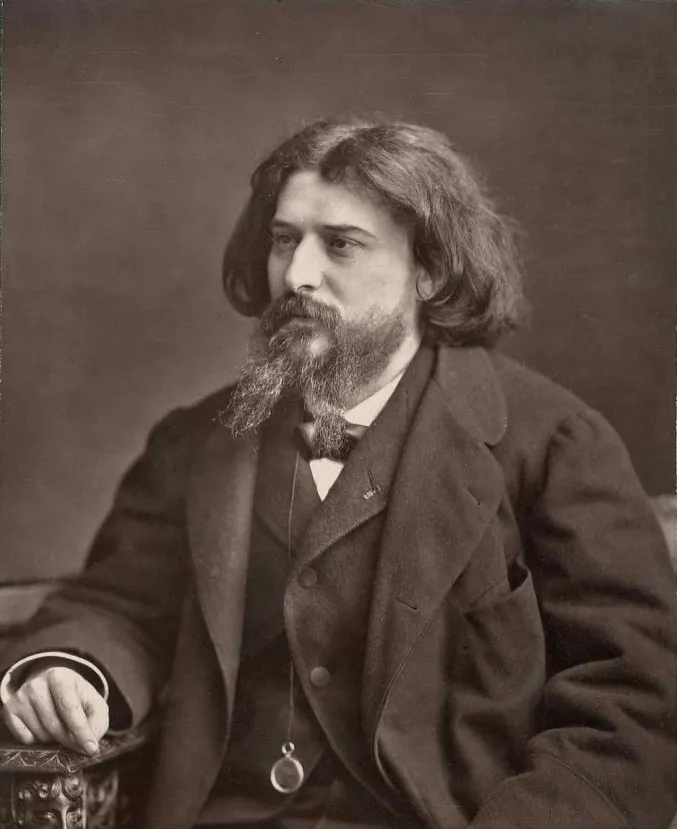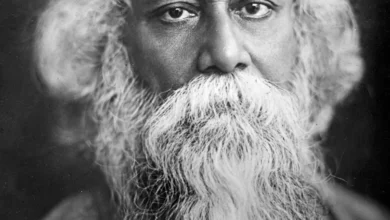Alphonse Daudet Biography, Wikipedia, Personal Life, Family, Career, Net Worth, Death
Alphonse Daudet (May 13, 1840 – December 16, 1897) was a prominent French novelist, short-story writer, poet, and playwright, celebrated for his vivid portrayals of life in Provence and his contributions to the Naturalist movement. Often dubbed the “French Dickens,” Daudet’s works blend realism, sentimentality, and humor, drawing heavily from his personal experiences. His most notable works include Letters from My Windmill (1869), Tartarin of Tarascon (1872), and Fromont the Younger and Risler the Elder (1874). His writing, rooted in humanism, captured the complexities of human nature and the charm of southern France, leaving a lasting legacy in French literature.
Profile
| Aspect | Details |
|---|---|
| Full Name | Alphonse Daudet |
| Birth | May 13, 1840, Nîmes, France |
| Death | December 16, 1897, Paris, France |
| Nationality | French |
| Occupation | Novelist, short-story writer, playwright, poet |
| Literary Movement | Naturalism, Realism |
| Notable Works | Letters from My Windmill (1869), Tartarin of Tarascon (1872), Sapho (1884) |
| Early Life | Born into a middle-class family; faced financial struggles after father’s bankruptcy |
| Career Beginnings | Moved to Paris in 1857; worked as a journalist and secretary; published early poetry |
| Major Themes | Provincial life, human struggles, social observation, humor |
| Personal Life | Married Julia Allard in 1867; had three children; suffered from syphilis later in life |
| Legacy | Known for vivid storytelling and regional French settings; influenced French literature |
Early Life
Alphonse Daudet was born on May 13, 1840, in Nîmes, France, to Vincent Daudet, a silk manufacturer, and Adeline Raynaud. His childhood was marked by financial instability due to his father’s business failures, leading to the family’s relocation to Lyon in 1849. Alphonse, one of three surviving siblings, struggled with frail health and truancy, contributing to a depressing boyhood. In 1856, he briefly worked as a schoolteacher in Alès, an experience so traumatic that he later reported nightmares about his unruly students. In 1857, he moved to Paris to join his brother Ernest, a journalist, who supported his early literary efforts.

Alphonse Daudet Personal Life
Alphonse Daudet was born in Nîmes, France, into a bourgeois family. His father, Vincent Daudet, was a silk manufacturer whose business struggles shaped Alphonse’s challenging childhood. Marked by financial instability and frail health, Alphonse faced a depressing boyhood, often skipping school. In 1849, the family relocated to Lyon after his father’s silk business collapsed, and by 1857, they lost everything, scattering the family. Alphonse, one of three surviving siblings out of five, moved to Paris to live with his elder brother Ernest, a journalist, who encouraged his literary pursuits.
Daudet’s personal relationships deeply influenced his work. In his youth, he formed a significant liaison with model Marie Rieu, inspiring his poetry collection Les Amoureuses (1858) and later the novel Sapho (1884), which reflected their strained relationship. In 1867, he married Julia Allard, a talented writer known for works like Impressions de nature et d’art. The couple had three children: Edmée, Léon, and Lucien. Despite his love for Julia, Daudet was unfaithful, engaging in multiple affairs, a behavior linked to his contraction of syphilis at a young age. This venereal disease, contracted in his teens, caused lifelong health issues, including severe pain and paralysis in his later years, documented poignantly in his journal In the Land of Pain.
Daudet’s health deteriorated significantly in the 1890s, with syphilis leading to spinal cord issues and agonizing symptoms. Despite undergoing painful treatments, he continued writing, showcasing remarkable resilience. His experiences with illness and poverty informed the emotional depth of his stories, particularly in works like Jack (1876), which explores themes of abandonment and suffering.
Alphonse Daudet Family
Alphonse was born to Vincent Daudet and Adeline Raynaud, with his father’s persistent financial failures casting a shadow over the family. He was close to his elder brother Ernest, who provided shelter and guidance when Alphonse moved to Paris in 1857. His marriage to Julia Allard was a partnership of mutual respect, as she supported his literary career while pursuing her own writing. Their children—Edmée, Léon, and Lucien—were part of a literary household, with Léon later becoming a noted journalist and anti-Semitic political figure, a stance that reflected Alphonse’s own controversial anti-Jewish views. Daudet’s friendships with literary figures like Frédéric Mistral and Émile Zola also shaped his personal and professional life, though his feud with Zola over plagiarism accusations strained their relationship.
Alphonse Daudet Career
Daudet’s literary career began in Paris, where he initially wrote poetry, publishing Les Amoureuses in 1858 to moderate acclaim. He then transitioned to journalism, contributing short stories and essays to Le Figaro, which earned him recognition in literary circles. In 1860, he secured a position as secretary to the Duke of Morny, a role he held until Morny’s death in 1865. This job provided financial stability but offered little to advance his literary ambitions.
His breakthrough came with Letters from My Windmill (1869), a collection of short stories celebrating Provençal life, written during stays in Fontvieille, Provence. The work’s vivid imagery and charm captivated readers. In 1872, he published The Prodigious Adventures of Tartarin of Tarascon, a satirical novel about a boastful Provençal hunter, which, though initially poorly received, became a cultural staple. His 1874 novel Fromont the Younger and Risler the Elder marked the peak of his career, earning the French Academy’s Jouy Prize and establishing him as a leading realist writer. Other notable works include The Nabob (1877), Numa Roumestan (1881), Sapho (1884), and L’Immortel (1888), a critique of the French Academy.
Daudet also wrote plays, such as L’Arlésienne (1872), which, despite initial failure, gained acclaim in its 1885 revival with Georges Bizet’s music. His short stories, like “The Last Lesson” from Monday Tales (1873), reflected the impact of the Franco-Prussian War and showcased his ability to blend humor with poignant social commentary. Daudet’s association with Naturalist writers like Zola and Flaubert enhanced his reputation, though he rejected strict adherence to any literary school, favoring a unique blend of realism, impressionism, and sentimentality.
Alphonse Daudet Net Worth
There is no precise record of Alphonse Daudet’s net worth, as financial documentation from the 19th century is sparse. However, his career trajectory suggests periods of both poverty and prosperity. His early life was marked by financial hardship due to his father’s failed business. His journalism and secretarial work provided modest income, but his literary success in the 1870s, particularly with Fromont the Younger and Risler the Elder, brought significant earnings and international fame. His works were widely translated and reprinted, indicating a comfortable income during his peak years. However, his prolonged illness and medical treatments likely strained his finances later in life.
Alphonse Daudet Death
Alphonse Daudet died on December 16, 1897, in Paris at the age of 57. While dining, he suffered a sudden collapse, likely due to complications from tertiary syphilis, which had caused severe neurological damage. Despite attempts at artificial respiration, he could not be revived. He was interred at Père Lachaise Cemetery, with Parisian crowds honoring his legacy. His final years were marked by intense suffering, yet he continued writing, leaving behind a body of work celebrated for its humanity and vivid storytelling.
READ ALSO: Zaheer Iqbal Biography, Wikipedia, Parents, Wife, Career, Net Worth, Cars
FAQs
What is Alphonse Daudet best known for?
Alphonse Daudet is best known for his works Letters from My Windmill (1869), Tartarin of Tarascon (1872), and Fromont the Younger and Risler the Elder (1874), which capture Provençal life and blend realism with humor and sentimentality.
How did Daudet’s health affect his writing?
Daudet’s syphilis, contracted in his youth, caused severe pain and paralysis, influencing the emotional depth of works like Jack and Sapho. His journal In the Land of Pain documents his suffering, yet he continued writing until his death.
Did Alphonse Daudet have any controversies?
Yes, Daudet faced criticism for his anti-Semitic views, reflected in Le Nabab, and his association with figures like Edouard Drumont. He also had a public feud with Émile Zola over plagiarism accusations.
What was Daudet’s relationship with Provence?
Daudet spent much of his life in Provence, drawing inspiration for works like Letters from My Windmill and Tartarin of Tarascon. His stays at the Fontvieille windmill shaped his portrayal of Provençal culture.
How did Daudet die?
Daudet died on December 16, 1897, in Paris from complications of syphilis, collapsing during dinner. He was 57 and was buried at Père Lachaise Cemetery.



